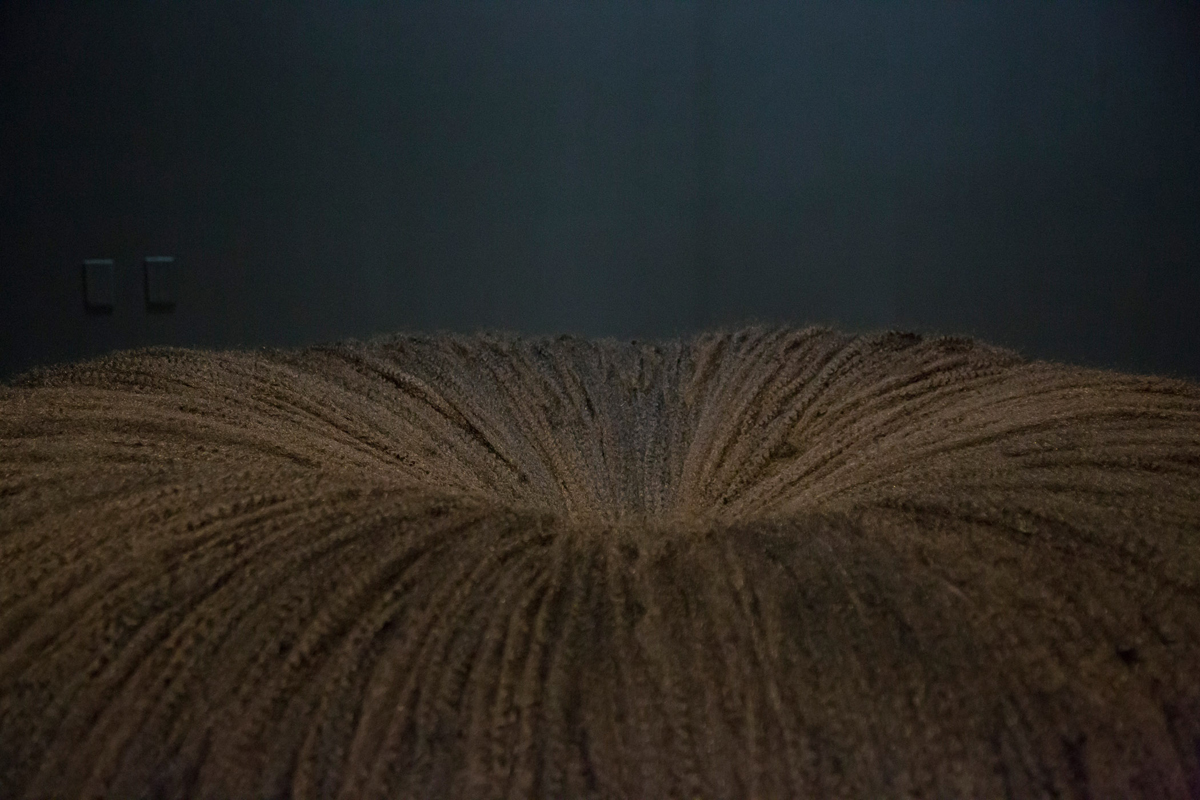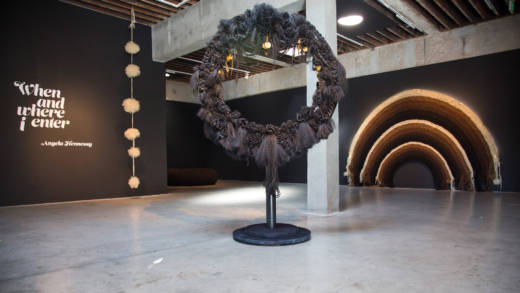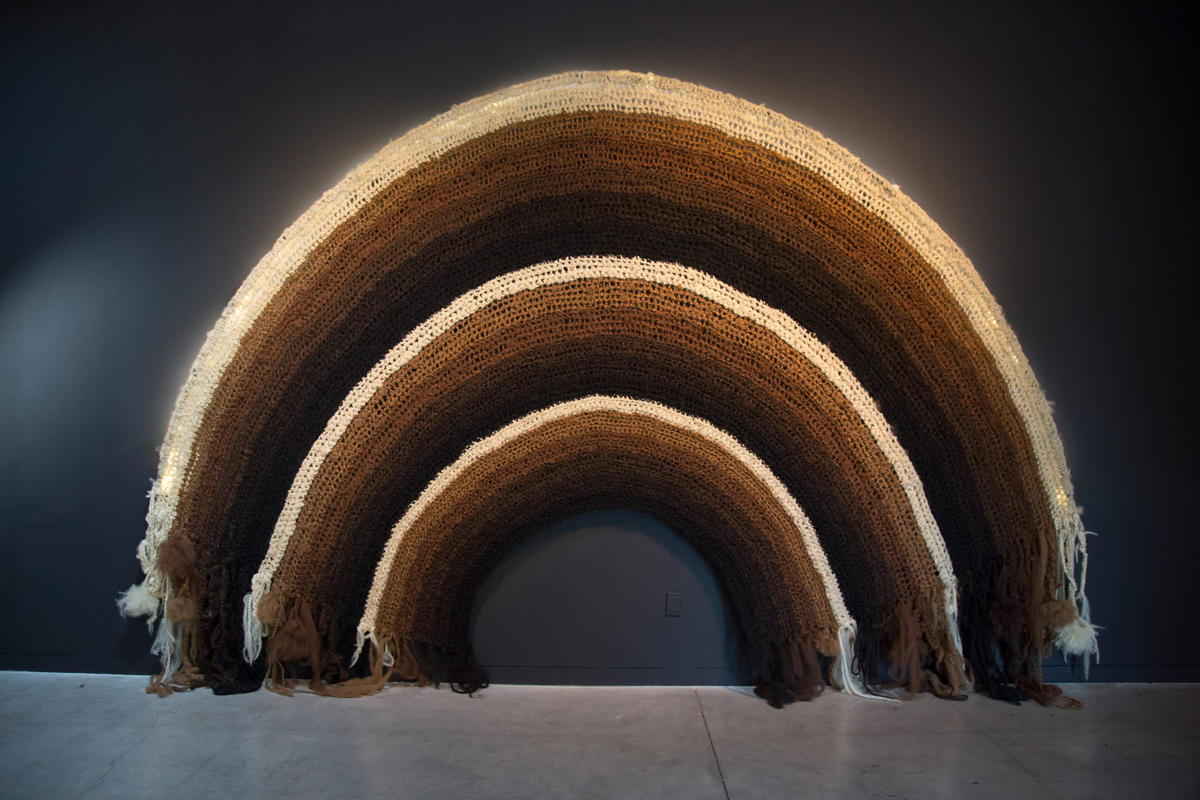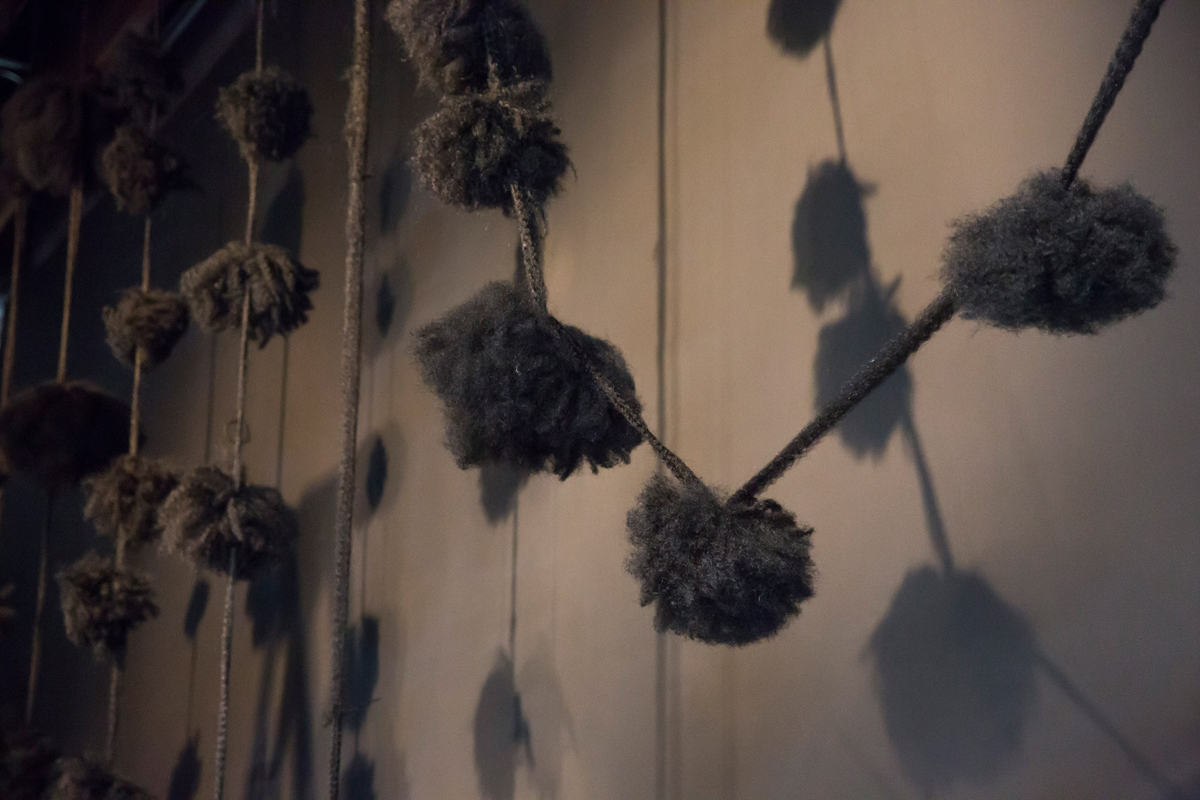To be a black woman is, by default, to lead a textured existence. Just as we learn to reconcile with the hair growing out of our heads — its politicization, its policing, the frequent uninvited grubby hands that attack it, the dreaded single-strand knots — we must constantly mediate between our “racialized identity, visibility, and materiality,” as outlined in the publication for When and where I enter, Angela Hennessy’s solo exhibition at Southern Exposure.
Still, there’s the black woman’s femininity, her sensuality. Hennessy’s mammoth — might I add, woolly — sculptural works tackle black women’s fraught history through the use of both synthetic and human hair, gathered locally from beauty supply stores and wig shops in her West Oakland neighborhood.
The first piece that Hennessy completed for the exhibition is Mourning Wreath, which also happens to be the first sculpture visitors encounter once they enter the building. The wreath is made of synthetic hair, human hair, found hair, the artist’s hair, gold leaf on copper, enamel paint, chain, a wire frame, and a cement base. Hennessy says the piece is “primarily a response to cross-cultural rituals of offering hair as a sign of respect and grief for the dead.” This piece, along with the others in the show, references Victorian and African hair weaving traditions.

“Hair,” Hennessy explains, “has long served as a material exchanged between the living and the dead. As a symbol of one’s identity, it is a potent tactile reminder of the separation caused by death. For black people specifically, hair is tangled with politics of race and hierarchies of power.”
Hennessy’s installations reclaim hair weaving traditions and mourning rituals with a panoply of fibers and compositions that sit, stand, and hang, stately in the space they take up. And this death motif isn’t a first for Hennessy — in fact, it’s the thematic thread that runs along the vast majority of her work. As an associate professor at CCA, she lectures and leads workshops on the decolonization of death and grief.





